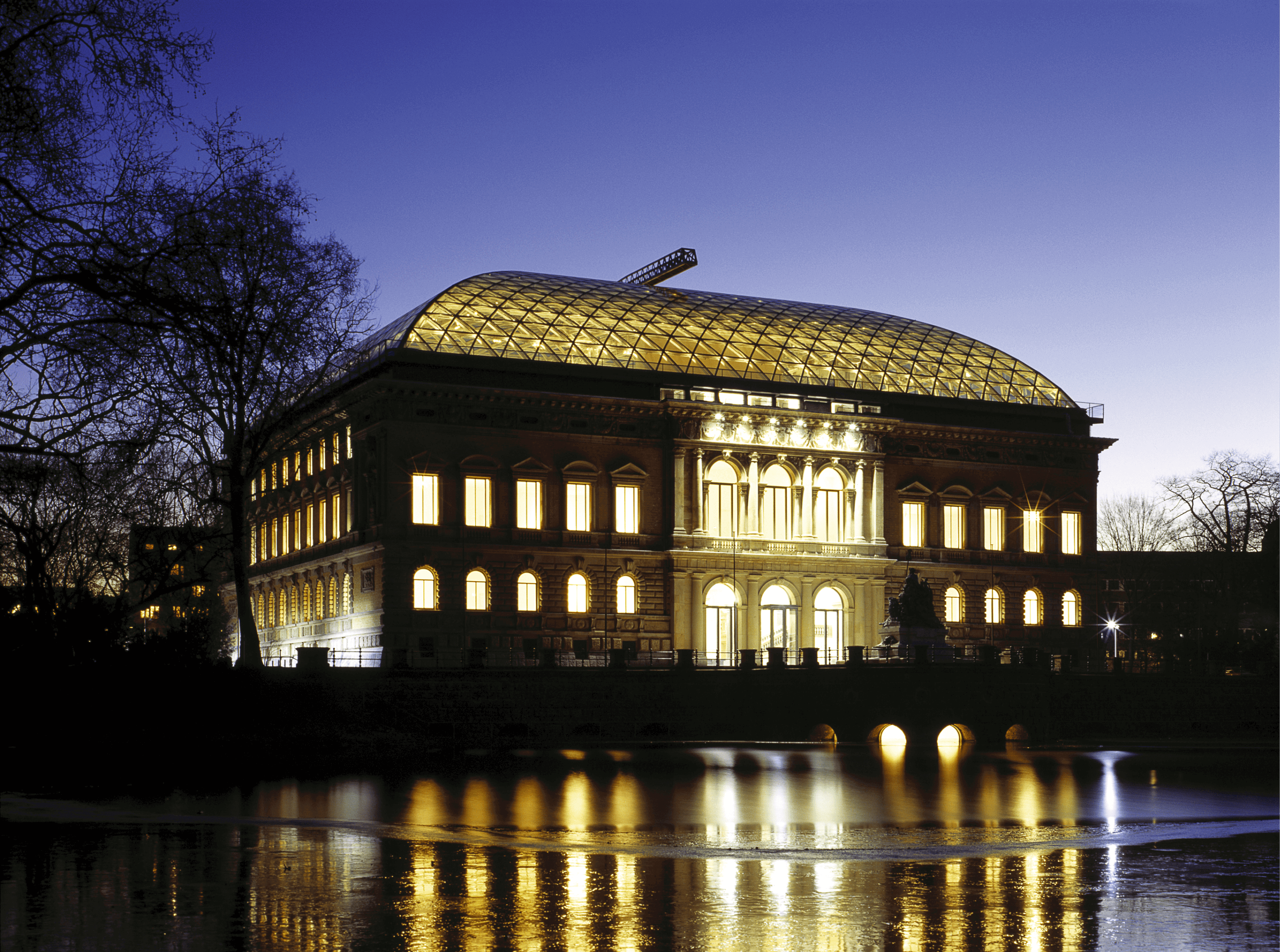Ralph Richter
Thomas Riehle

The Reconstruction of a Parliament Building – The K21 Art Collection in Düsseldorf’s Ständehaus
In 1995, the decision was taken to convert it into a new museum for international contemporary art – for art of the 21st century. The various spatial structures and functions are catered for with a minimum of lighting instruments. Intelligent light management and the exchange, addition and omission of components allow for differentiated lighting scenarios and guarantee users flexibility, both now and in the future. Yet, the illumination with its unobtrusive design is subordinated to the art installations.
The demands on the lighting design reflect the various uses of the reconstructed building: representational qualities and monumental impact inside and out, as well as multifunctional, flexible illumination for various events and for valuable contemporary art works of a young collection that is still growing.
The illumination of the atrium has been adapted to the requirements of contemporary multi-media systems, since both art installations and government events have to be accommodated.Powerful projectors attached to the glass cupola’s structural beams radiate throughout the atrium space and generate homogeneous illuminance levels on the ground floor.
Prominent columns flank the large perron. The capitals’ ledges accommodate minimized uplights that homogenously illuminate the ceiling vault and create an imposing and light-flooded entrance area without visible luminaires.
In order to create a landmark effect of the glass cupola at night as well as by day, the base of the structure has been fitted with cardanic low-voltage halogen projectors that are tiltable and have been integrated into the ventilation cladding. Their light follows the line of the cupola’s diagonal struts. The luminaires’ narrow light beam distribution illuminates the inner surfaces of the construction up to its zenith, thus creating a transparent, softly glowing glass membrane that is visible far beyond the city boundaries. The lighting of the displayed exhibits is provided by powerful projectors on a track system.